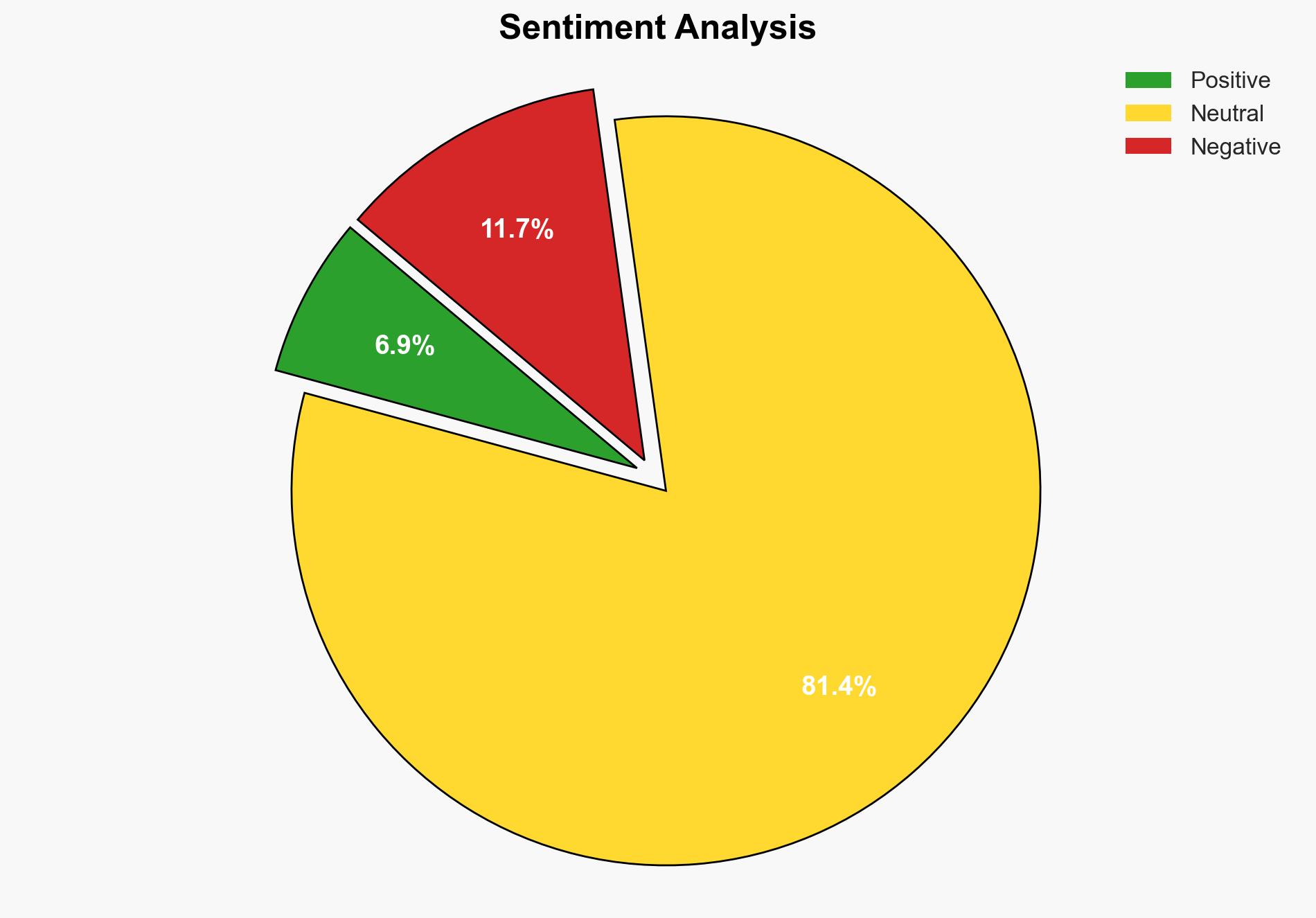Thousands of misconfigured building access systems have been leaked online – TechRadar
Published on: 2025-02-28
Intelligence Report: Thousands of misconfigured building access systems have been leaked online – TechRadar
1. BLUF (Bottom Line Up Front)
A significant cybersecurity vulnerability has been identified involving thousands of misconfigured building access systems (AMS) globally. These systems, which control and monitor access to both digital and physical resources, are exposed to potential cyberattacks due to misconfigurations. This exposure poses a substantial risk to various sectors, including construction, healthcare, education, manufacturing, oil, and government organizations. Immediate action is required to mitigate these vulnerabilities and protect sensitive data from cybercriminals.
2. Detailed Analysis
The following structured analytic techniques have been applied for this analysis:
SWOT Analysis
Strengths: The identification of vulnerabilities allows for preemptive action to secure systems.
Weaknesses: Widespread misconfiguration indicates systemic issues in AMS deployment and management.
Opportunities: Enhancing cybersecurity measures can improve resilience against future attacks.
Threats: Cybercriminals could exploit these vulnerabilities for identity theft, data breaches, and unauthorized access.
Cross-Impact Matrix
The vulnerabilities in AMS could have cascading effects on neighboring regions, particularly in Europe and the MENA region, where high concentrations of these vulnerabilities have been detected. A breach in one area could lead to increased cyber threats in adjacent regions.
Scenario Generation
Best-Case Scenario: Rapid response and patching of vulnerabilities by vendors and organizations prevent any major breaches.
Worst-Case Scenario: Cybercriminals exploit these vulnerabilities, leading to widespread data theft and unauthorized access to critical infrastructure.
Most Likely Scenario: A mixed response with some vulnerabilities being patched while others remain exposed, leading to isolated incidents of data breaches.
3. Implications and Strategic Risks
The misconfigured AMS poses significant risks to national security, regional stability, and economic interests. The potential for cybercriminals to gain unauthorized access to sensitive data and facilities could lead to identity theft, social engineering attacks, and compromised physical security. This could undermine trust in digital infrastructure and have long-term economic implications.
4. Recommendations and Outlook
Recommendations:
- Organizations should conduct immediate audits of their AMS configurations and apply necessary patches.
- Vendors must enhance their security frameworks and provide clear guidelines for secure AMS deployment.
- Governments should consider regulatory measures to enforce stringent cybersecurity standards for AMS.
Outlook:
Best-Case: Enhanced security measures lead to a reduction in vulnerabilities and improved trust in AMS.
Worst-Case: Continued exposure leads to significant breaches, prompting stricter regulations and increased costs for organizations.
Most Likely: A gradual improvement in AMS security as organizations and vendors address vulnerabilities.
5. Key Individuals and Entities
The report highlights the involvement of Modat in identifying these vulnerabilities. Additionally, organizations in countries such as Italy, Mexico, and Vietnam are noted as having a high concentration of flawed devices.




